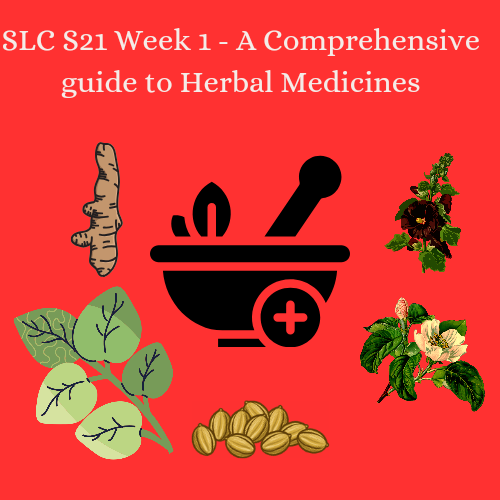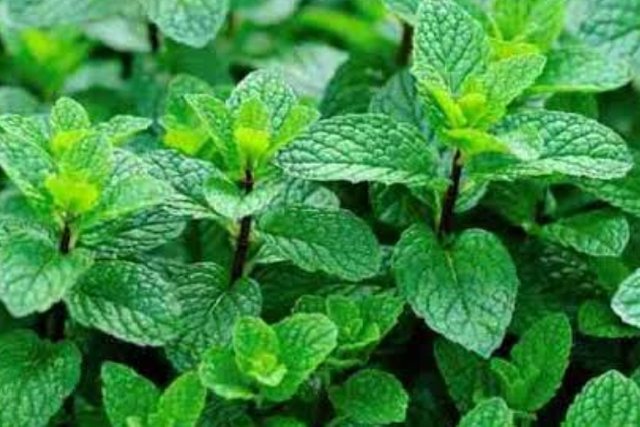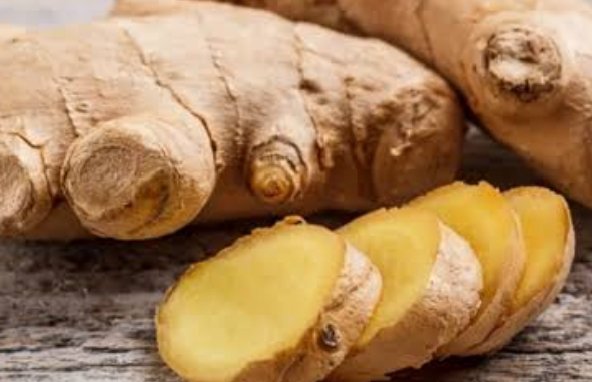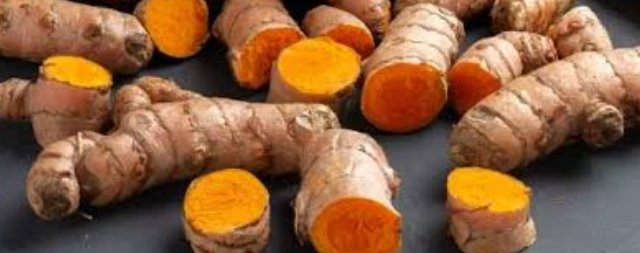SLC S21 Week 1 - A Comprehensive guide to Herbal Medicines
Helloo friends,

editing by canva
Research Assignment: Discover and document the history of herbal medicine in your culture or region of the world.
A few thousand years B.C. For thousands of years before the birth of Christ, South Asians now growing, Our ancestors enjoyed various herbal concoctions.
South Asian people have been using herbal medicine for more than 5,000 years, with a tradition from the Mesopotamia period of the Indus Valley civilization. One can not possibly discuss the oldest and one of the most influential system of medicine without mentioning Ayurveda which was born here and can be retraced back to Rigveda and Atharvaveda. Ayurveda is the science of life which acted on the principle that there should always be balance between human body, human mind and the nature and the important component of the system was herbal treatment. Different herbs such as ashwagandha which is popular for its tonic effects; turmeric for inflammatory illnesses and neem for skin ailments became core to these practices.
During the first few centuries of the common era, with the expansion of trade and cross cultural contacts South Asian region turned into a melting pot of healing practices. From about 1000 CE, the inflows of Islamic influence introduced Unani ( Greco Arabic) system of medicine to the area. As described by Hippocrates and Galen of Greek origin, Unani medicine found balance with the work of Persian and Arab scholars such as Ibn Sina (Avicenna). Hakims i.e. Unani healers and vaidyas/ ayurvedic practioners used native herbs; thus there was always intermingling of herbal knowledge.
Taking the colonial influence of the 18th and 19th centuries, conventional African medical systems lost the authoritative structure, and those populations were introduced to Western Approaches of healing. Nevertheless, a number of families in South Asia possessed hereditary revolutionary knowledge and used herbs for treating diseases and disorders. In the past few years, there is increase use of herbal medicine in South Asian region since people are embracing natural cure from diseases of which has its origin from Ayurveda and Unani. Ayurevadic system of medicine still cherished part of South Asia’s cultural meaningfulness, which represents a primitive healing interaction with nature.
Comparison Task: Create a table comparing the benefits and side effects of modern medicines vs. herbal medicines for common ailments (e.g., cold, headache).
Here is the tabel I created about the modern and herbal medecine, I tried to write some benefits and side effects ( Fects of modern medicines versus herbal medicines for cold and headache):
| Aspect | Modern Medicines for Cold | Herbal Medicines for Cold |
|---|---|---|
| Benefits | Fast relief from symptoms | Natural ingredients |
| Reduces congestion | May enhance immune function | |
| Proven effectiveness | Generally fewer side effects | |
| Side Effects | - Drowsiness or dizziness | Possible allergic reactions |
| Stomach upset | Quality may vary | |
| Risk of dependence | Slower to take effect |
| Aspect | Modern Medicines for Headache | Herbal Medicines for Headache |
|---|---|---|
| Benefits | Quick pain relief | Natural options available |
| - Effective for various headache types | May reduce headache frequency and intensity | |
| Backed by clinical research | Often fewer synthetic ingredients | |
| Side Effects | Possible stomach irritation | Possible allergic reactions |
| Risk of rebound headaches | Effectiveness can vary | |
| Potential for misuse | May take longer to work |
Summary:
- For Cold: The medications of today offer instant cures though they come with all the flukes of a modern drug. Herbal medicines as they are prepared from natural products have potential immune benefits but differ in their quality.
- For Headache: A modern medication that is efficient in terms of the quick alleviation of the headache and an herbal medication that might offer a gradual controlling of the headache disease.
Writing about modern herbs and ancient herbal research in Pakistan.
In Pakistan, especially today, herbs have continued to play major roles in both the ancient and the modern world where old age knowledge shifts to modern age techniques. Historical background of herbal system in Pakistan can be traced back regarding Ayurvedic & Unani medical systems for centuries. Such local plants as neem, tulsi, ginger, and turmeric have been used for medicinal purposes to cure diseases such non-communicable diseases including cold, digestive problems, and skin diseases. Namely, an ancient system of AVC known as Unani medicine was introduced in the region during the Mughal rule and still remains popular to a greater extent together with home-based practices.
Modern research organizations in the country today, ranging from universities to the developing pharmaceutical sector, are reverting back to the findings of their ancestors and researching on these herbs. As people seek out more natural means for managing their stress, they are studying such ingredients as Ashwagandha for its reducing stress properties, ginger for anti-inflammatory characteristics, and mint for helping with digestion. This research is very important to support the folk usage of the plants, which will help in extending the utilization of the natural remedies and restoring the faith in the usage of the natural products.
Institutions such as Pakistan Council of Scientific and Industrial Research (PCSIR) is participating in the research on such herbs while the natural scenario of Pakistan with various demography of flora in hills and mountain top is a valuable source. There is a shift in today’s Pakistani herb usage and at present, herbal teas and oils, and capsules are in demand. The blending of Science and experience is in the process of creating a viable future for the natural Health care system in Pakistan so that an herbal legacy of the country can truly flourish in the contemporary world.
Medicine in Islam and its herbal treatment
According to Islamic vest, medicine is considered to be a kind of knowledge that almighty Allah has bestowed to the mankind. It is important for a Muslim to seek treatment for an illness and to take care of his or her body. Prophet Muhammad (PBUH also encouraged people to seek treatment when ill as Allah has created a cure for all diseases, except death. This emphasis has therefore given rise to the establishment of the Islamic medicine which includes both Hadith medicine and herbal medicine.
Among Islamic medicine herbal remedies are given significant importance. A wide variety of herbs are described in the Quran and Hadith; black seed, for example, as described by the Prophet Muhammad (PBUH) as a remedy for all illnesses except death. Another wonderful cure as mentioned in Quran is honey which is seen as a medicine. Islamic medicine also includes the use of several herbs for example mint, ginger and turmeric to overcome digestive disorders, respiratory disease, and inflammation respectively.
Knowledgeable and skilled Islamic herbal medicine practice is in white with the modern framework of total well-being that emphasizes both body and soul. This gives the use of herbs that follows spiritual practices a good match, since the culture holds the belief that the health of the body is an offering. Such an approach is effective because, in addition to physical health, happiness contributes to the successful performance of the divine mission and a prosperous life.
Herb Identification: Pick 3 common herbs in your kitchen such as mint, ginger or turmeric and then show the benefit of each of them on your health. State where among the recipes you have incorporated these herbs
Here are three kitchen herbs along with their health benefits and examples of how I use them in cooking:
1. Mint
Mint is mostly consumed and used because of its pleasant taste as well as smell. It’s helpful for digestion, keeps away bloated feeling, and can be used to treat headaches since ginger has a cooling effect. Besides, mint contains antioxidants that help improve the immune system of the human body. I add it to mint chutney mostly with the fried items such as pakoras and samosas. The mint leaves also complement the lemonade by giving this sweet a clue of fresh look which is suitable for a hot and sunny day.

2. Ginger
Ginger is known by many to possess some or many medicinal values. There are is digestive system benefits associated with it consists of help to handle nausea, anti inflammatory and many more. It also proved effective in relieving muscle pain and is said to help regulate high blood sugar. Ginger is usually used in chicken curry, the spicy and earthy taste complements the food item. Another is ginger tea and this particularly during the cold seasons because it has a way of warming the body up and easing throat irritation.

3. Turmeric
Turmeric is also known as a potent anti-inflammatory agent and a potent antioxidant agents. Research shows that it aids in cardiovascular and cartilage health and possibly cognition. In the kitchen, turmeric mostly goes in the dal and makes the dal much richer in colour. I also like golden milk which is basically turmeric in milk and this is quite popular for usage to boost the immune system.

Ginger Turmeric and Mint Recipe
The Ginger Turmeric and Mint tea can be termed as a rejuvenating and health promoting beverage which can be drunk at any time of the day. Combining the spices which have anti-inflammatory and antioxidant ingredients with mint to give the tea’s cooling ability, this tea will assist in digestion, decrease bloating as well as enhance the immunity of the body. Here is one easy method of preparing it.
Ingredients:
1 tablespoon grated ginger
1 tsp ground turmeric or 1 tsp fresh grated turmeric (preferably fresh)
1 tablespoon fresh mint leaves, (Extra for garnish)
8 ounces water
Add a pinch of black pepper to a turmeric supplement as it increases the bioavailability of the spice.
Optional: grated juice of half a lemon and honey for additional taste and sweetness.
Instructions:
- Start with water on the pot or kettle and bring it to boil.
- Put a separate spoonful of ginger, turmeric, and mint unto a tea infuser, or simply drop right into the mug.
- Add the hot water on the ingredients and lastly sprinkle pepper. It is recommended for steeping for 5-7 minutes for the herb to release its full flavor.
- Squeeze if necessary and add the lemon juice OR honey according to preference. For garnishing you may include additional mint leaves.
This tea takes advantage of each ingredient’s potential health advantages. Ginger helps to ease digestion, has anti-emetic effect and has an anti-inflammatory effect. Indian spices such as turmeric contain curcumin which has beneficial effects on oxidative stress and inflammation levels and when administered alongside black pepper which is also good a spicy was boosting the absorption rate of curcumin. The bitter taste of mint clears up the taste palette and also helps the digestive systems reducing water retention and any feelings of bloating.
Better taken warm or at room temperature, this tea is perfect for everyday consumption especially in winters or during the flu season. More variations include putting a fillet into the water together with a green tea bag to enhance a metabolic boost, or spicing up with cinnamon, or little dash of cayenne pepper.
What are the forms of herbs and what are the types of herbs and
Herbs are among the most diverse additives available and they exist in several forms and each form has different functions. Kinds include fresh cummin, dried cummin, powdered cummin, cummin essential oil, liquid cummin tincture and capsules.
Fresh Herb are employed in food preparation processes mainly because they have a raw and fresh taste and smell. Some examples include mint, basil and cilantro which are usually used either fresh as garnishing or to give that added taste to your food. All the fresh herbs contain the highest level of active compounds, but the herbs lose their efficacy sooner than the dried ones.
Dried Herbs are produced by drying fresh Herbs either in the air or under the sun, to maintain them for longer.time. Drying somewhat diminishes strength, but dried herbs, as thyme, rosemary, and oregano are familiar to everybody and are usually stronger in taste.
Dried Herbs refer to products where the plant parts are dried and as such preserved, perfect for use in making teas, smoothies or spice mixes, are powdered herbs. Powdered herbs include turmeric, ginger, and cinnamon, which are used in cooking a food recipe or for concocting solutions/medications.
Essential Oils can be defined as the extraction of oils from plants, which Therefore, it can be defined as an extraction of a plant with its oil in liquid from. Appearing in aromatherapy as well as being applied topically, essential oils come from herbs such as lavender, eucalyptus, and peppermint.
Tinctures are identified as liquid extract that is prepared by steeping herbs within alcohol or vinegar. They are a fast means of taking herbs for example, when you require the strength of echinacea or ashwagandha for your health needs.
It is easy to administer herbs since they come in capsules when they are taken as supplements, for instance, raw garlic or bitter herbs.
All of them have their functions and are versatile to fit a cooking or medical purpose or even a therapist’s use.
Safety Report: Choose one herb and discover if they have any side effects and how to minimize the likelihood of side effects
Herb Safety Report: Ginger
Ginger is Zingiber officinale which is commonly used in partiular in treatment of inflammation, antioxidants, and digestive health problems. Popular for its uses in food preparation and traditional cure for ailments ginger can be deemed safe for human consumption and use when taken in moderate portion. However, it can cause side effects when taken in large doses, as well as by certain groups of the population that have certain illnesses.
Potential Side Effects:
1. Gastrointestinal Issues: Intake of ginger in high quantities (above 5 grams per day) trigger side effects that range from mild to severe, which actually affects the digestive system by causing heartburn, bloating, gas, and stomach discomfort. There are those who develop a burning sensation or inflammation of the mouth and throat especially when taking raw ginger.
2. Bleeding Risks: This product might be a blood thinner since it has the ability of preventing formation of blood clots. This could enhance the risk of bleeding which is dangerous more so in the individuals on a regime of warfarin or aspirin or with bleeding disorders.
3. Blood Sugar and Blood Pressure: Although ginger helps in regulating blood sugar and blood pressure, consuming more food items rich in ginger create badly affects this level. Ginger when taken in large doses is not advisable for users of diabetics or those with low blood pressure since it will affect their blood glucose levels as well as pressure.
4. Pregnancy Risks: It is recommended that pregnant individuals consume no more than a small amount of ginger each day because more ginger can result in contractions or even cause a miscarriage in some cases. While ginger has been found to help lessen pregnancy-related nausea, patients are encouraged to seek their doctor’s opinion as to how much is safe to consume.
How to Avoid Side Effects: Where possible, ginger should be taken in moderate proportions and with portion control especially since ginger in its whole form taken in large amount is not advisable for human consumption with proportions usually not exceeding 3 to 4 grams per day for any given adult. Health-wise, ginger supplements should not be taken by people who are taking blood thinner or those that manage high blood pressure. Those who are pregnant and people with digestive problems should take small portions at first to keep track of any side effects and people with tender stomachs should not take raw ginger.
Hi, @sajjad78645,
Your post has been manually curated!